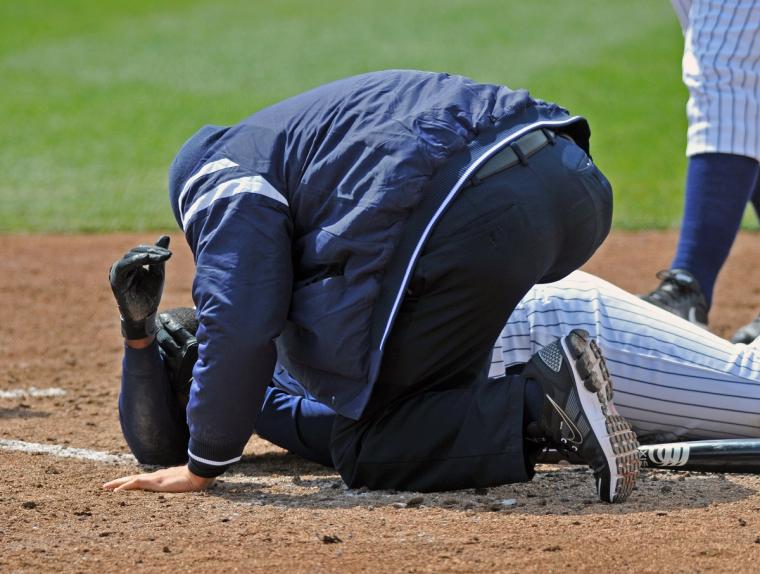
More than 40% of 152 deceased youth, high school and college athletes — all subject to repeated blows to the head — had a degenerative brain disorder associated with concussions. That’s the disheartening news from a Boston University CTE Center study published in JAMA Neurology in August, based on examination of the subjects’ donated brains. Suicide was the most common cause of death in the cohort.
According to ESPN.com:
The donors died from 2008 to 2022, and their age at death ranged from 13 to 29. Almost all of the brains studied showed the earliest stages of CTE [chronic traumatic encephalopathy]. Most of the athletes diagnosed with CTE played football as their primary sport, and a smaller number played ice hockey and soccer.
The scientists also diagnosed CTE in the first American woman athlete, an anonymous 28-year-old collegiate soccer player. This adds to the emerging list of women athletes with CTE, after scientists in Australia earlier this year posthumously diagnosed Heather Anderson, a former Australian rules footballer, with the first case of CTE in women’s professional sports.
In addition to evaluating the brains, the researchers also conducted online surveys and postmortem interviews with most of the athletes’ next of kin to better understand the cognitive symptoms that presented before death. Without a clear association between symptoms and CTE status, the study concluded that young athletes exposed to repetitive head impacts were highly symptomatic irrespective of CTE status, and the causes of symptoms might be related to multiple factors.
CTE is unable to be diagnosed in the living. Ann McKee, lead author of the Boston University study, stressed that the fact more than half of the brains studied did not contain CTE suggests that “not all contact sport athletes with symptoms have CTE.”
“The symptoms that we’re talking about, things like depression or behavioral problems or suicidality, could not distinguish those who had CTE and those who did not. It really kind of comes back to that idea that we really don’t know what this problem looks like in the living,” Christopher Bailey, director of University Hospitals’ Sports Medicine Concussion Center in Ohio, told Ideastream Public Media. “For me to think about... the athletes that are suiting up to play football on Friday nights, I don’t know that this sample really tells me much about that because the people that were a part of this study were so very impaired and had so many problems just not typical of the normal athletes that we see.”
Sports-related concussions — their diagnosis, management and prevention — remain a concern at all levels. In June, a group of more than 100 expert researchers and clinicians from around the world released an updated consensus statement on concussion in sport, which includes new scientific evidence and revised recommendations.
“The updated consensus statement will become the most widely recognized guidance in the world on the diagnosis, management and prevention of concussion in sport,” NCAA Chief Medical Officer Brian Hainline, who served on the panel of international experts that led the research, said in a statement. “Its impact will be felt across the globe.”
 The consensus statement on concussion in sport is based on the outcomes from the sixth International Conference on Concussion in Sport, held in Amsterdam in October 2022 and published in the British Journal of Sports Medicine. Researchers and investigators collaborated for five years toward the final consensus statement and 10 accompanying subspecialty articles.
The consensus statement on concussion in sport is based on the outcomes from the sixth International Conference on Concussion in Sport, held in Amsterdam in October 2022 and published in the British Journal of Sports Medicine. Researchers and investigators collaborated for five years toward the final consensus statement and 10 accompanying subspecialty articles.
These are some of the recommendations included within the latest consensus statement:
• New and updated age-appropriate tools to aid identification and management of concussion.
• New versions of strategies for return to active education and sport.
• Stronger evidence for the recovery benefits of light-intensity aerobic exercise within the first 48 hours following concussion.
• New targeted approaches to concussion rehabilitation, including cervicovestibular rehabilitation for athletes with post-concussive neck pain, headaches, dizziness and/or balance problems.
• Call for an interdisciplinary working group to guide research into potential long-term effects.
Meanwhile, universities are introducing new ways to combat concussions. The University of Tulsa’s Oxley College of Health & Natural Sciences recently opened the Concussion Center to address management of post-concussion recovery. The interdisciplinary initiative is housed in the on-campus Mary K. Chapman Clinic for Communicative Disorders and provides such services as concussion education and rehabilitation, return-to-learn planning, return-to-physical-activity planning, cognitive rehabilitation, vestibular rehabilitation and concussion-related mental health management, according to university officials.
Clients can be from the university community or the Greater Tulsa area, and the clinic also provides a learning opportunity and clinical experience for students in the university’s athletic training graduate programs.
“Concussions can have a variety of effects: They can cause physical, cognitive, psychological and emotional changes,” Laura Wilson, an associate professor of speech-language pathology, said in a statement. “This complexity means that individuals with concussion benefit from support from multiple health care disciplines. In preparation for opening the center, we met with outstanding colleagues from around the city of Tulsa who help care for this population.”
At Concordia University, researchers have developed a virtual and augmented reality training tool to create realistic simulations of concussion symptoms that allow for the practice of assessment skills in a safe, controlled environment. The Field Assessment Simulator helps quickly and accurately identify the signs and symptoms of a concussion, complete pertinent assessment tests and make decisions for treatment, according to university officials, who added that it also is a valuable tool for parents and coaches that can be accessed through smartphones and tablets.

